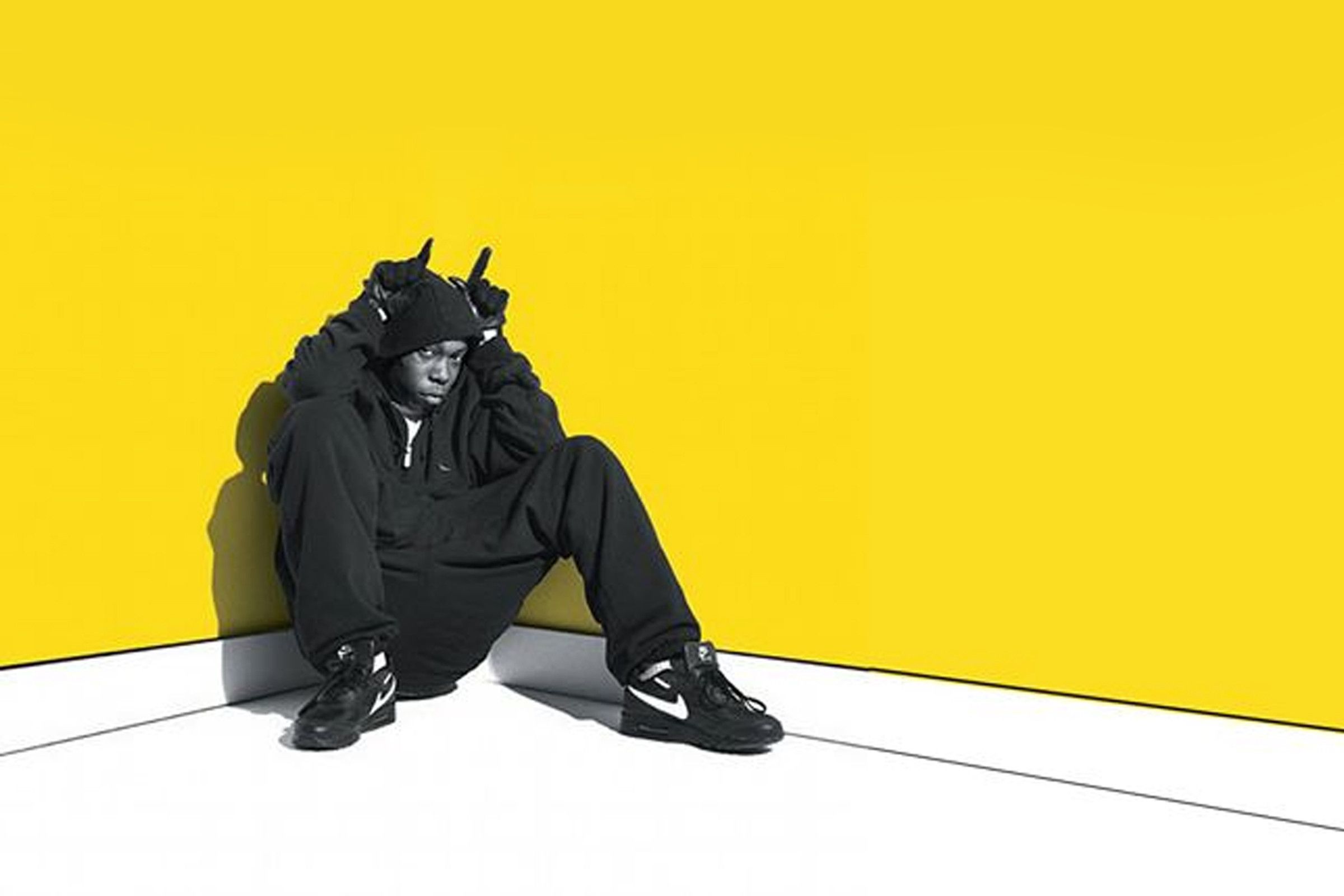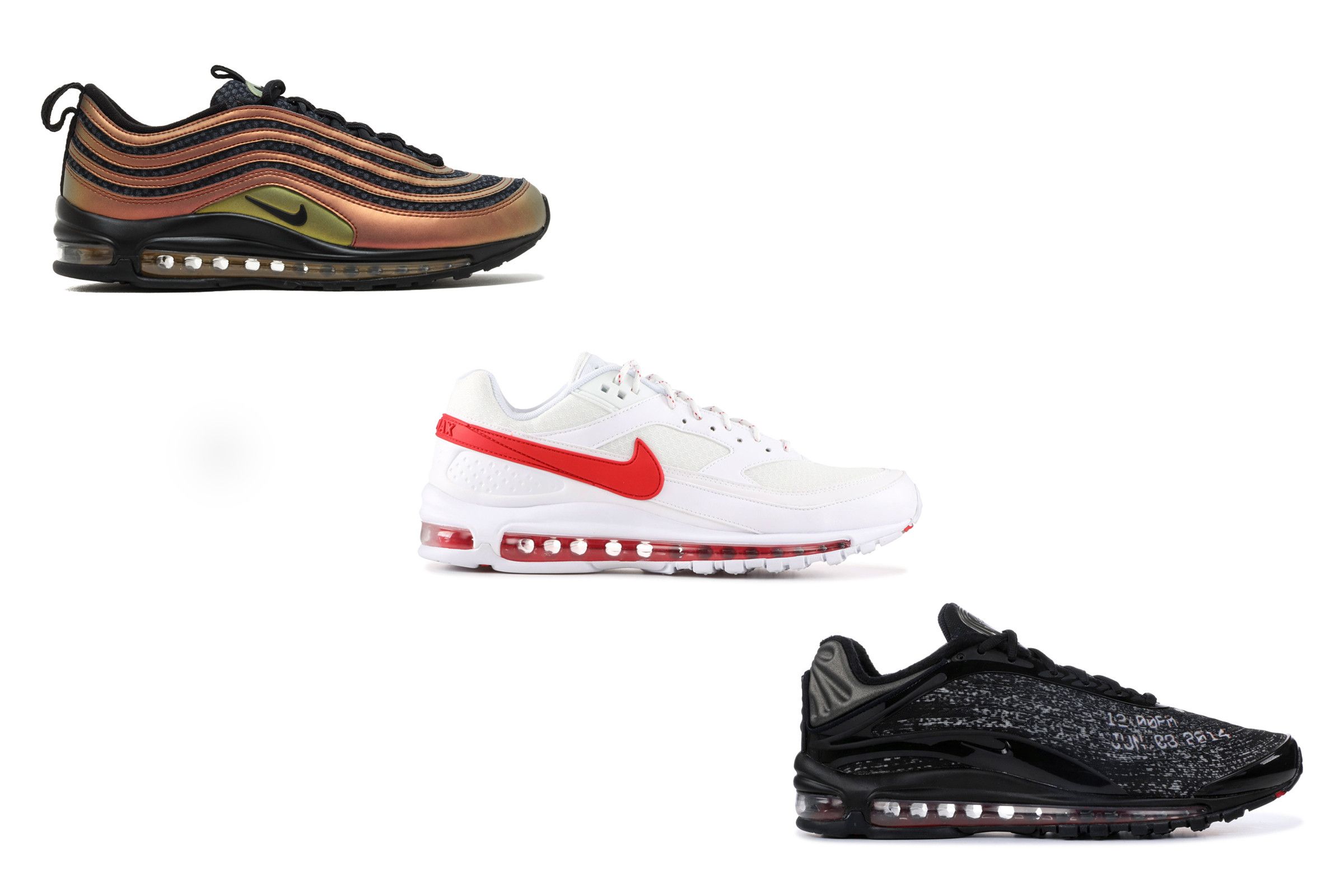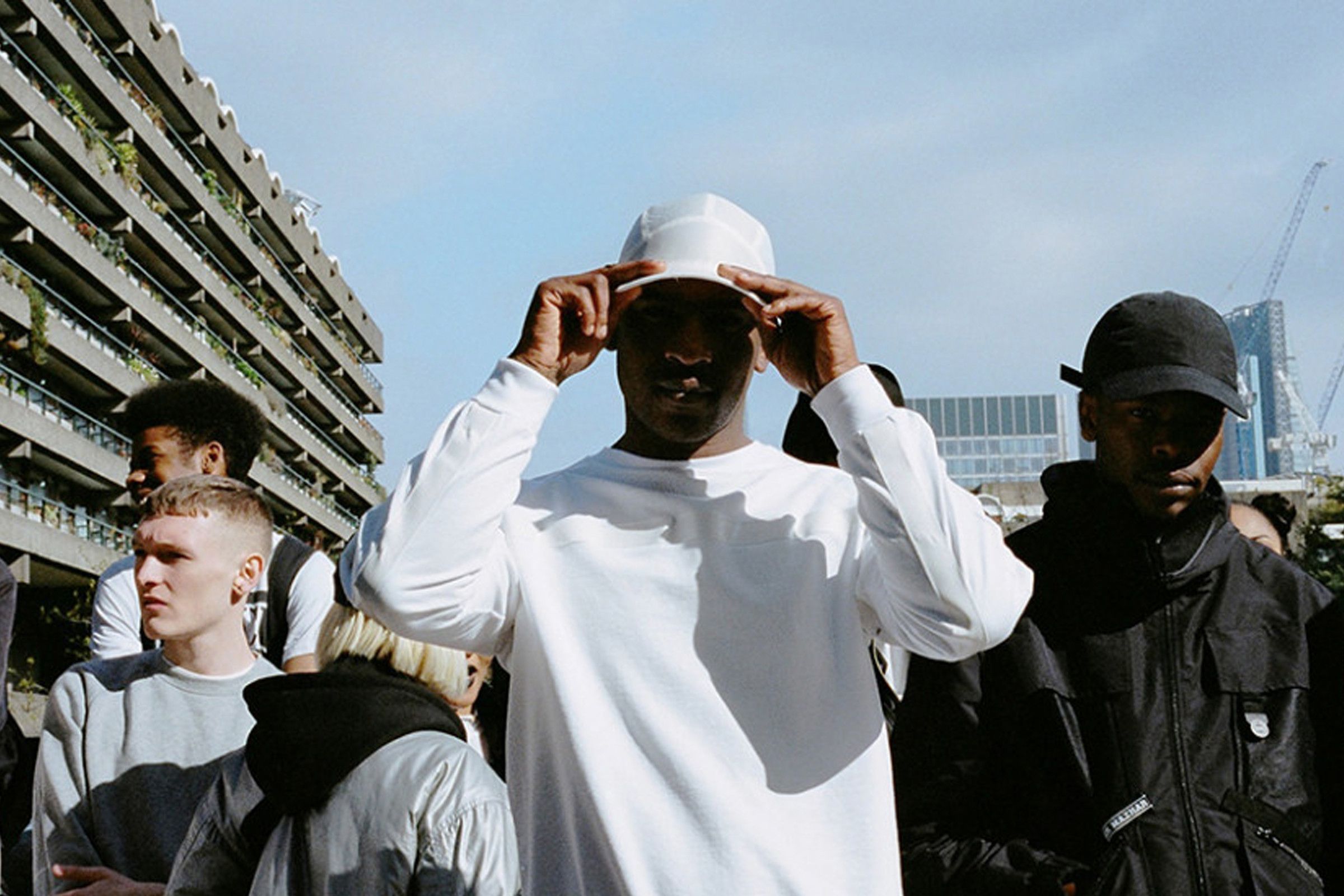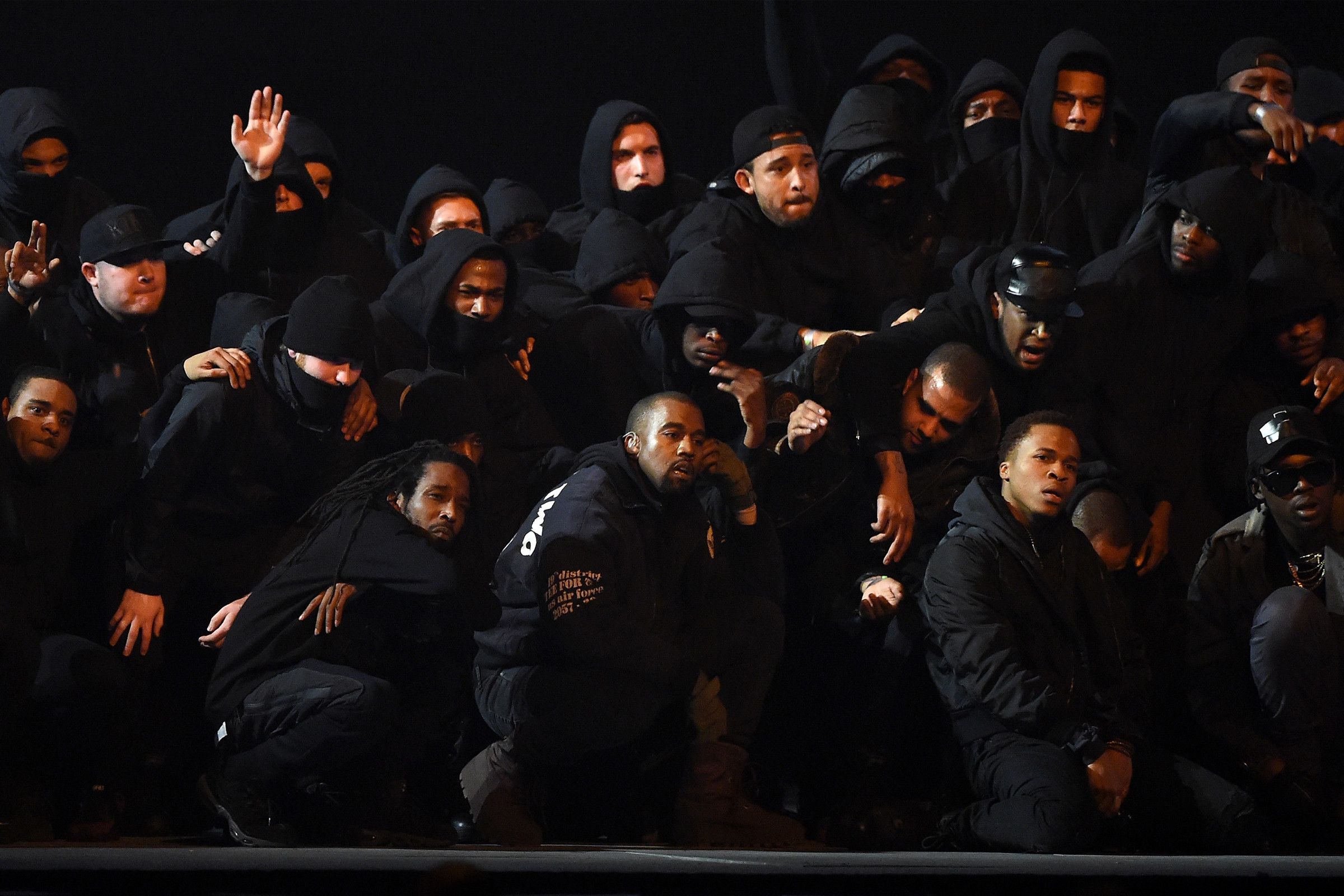Top Boys: What is Roadman and Grime Style?
September 12, 2019byMarc Richardson
Top Boys: What is Roadman and Grime Style?
- WordsMarc Richardson
- DateSeptember 12, 2019
- Share
2016 saw the North American mainstream embrace grime as a musical genre—but also the associated culture cues. On the style front, grime’s entry into the global mainstream saw Stone Island become more popular than ever, while Skepta collaborated with Nike to create a silhouette filled with nods to British culture and streetwear, as a whole, became increasingly inflected with a British twang. In the shadows, Drake—ever-ready to throw himself into cultural projects—approached Netflix to rekindle Top Boy, the celebrated British TV show that chronicled life on a London estate and shed light on the day-to-day life of the estate’s hustlers—colloquially known as “roadmen.”
What, you may wonder, does that have to do with grime and the style associated with it? Well—while Grime may have been the vehicle through which the rest of the world came to discover the aesthetic of the British streets, the genre and the clothes so closely tied to it have their roots in British roadman culture.
Follow Marc on Twitter here.
Practicality and Roadman Style
While the roadman aesthetic is often thought of in terms of matching tracksuits, there’s more to it than that. The peculiar aesthetic is born from a mix of two things: practicality and posturing. While they’re deeply intertwined and each has had its moments in shaping the aesthetic, it’s the first concern—practicality—that is, arguably, the most important when it comes to the foundational elements of the roadman aesthetic.
Above all else, what was worn on the roads was shaped by what was available and attainable. Sportswear was widely available in small local shops and national retailers alike and, perhaps most importantly, it was relatively affordable. It’s part of why track suits were so popular—because they were easy to come by and durable. That’s to say nothing then there were more utilitarian concerns, like braving cold and dreary winter weather outside.
Top Boy paints a compelling picture of how practicality shaped the way those on the roads dressed. While tracksuits don’t necessarily abound in the original seasons of the show, the younger characters are often shown in relatively nondescript sportswear. They’re wearing hoodies and oversized outerwear; for some, it’s a sleeveless vest, for others, a parka. The nondescript nature of the clothing was also important in the context of increased police surveillance through CCTV. How do you tell one track suit-wearing youth apart from another track suit-wearing youth? Dizzee Rascal’s Boy in Da Corner cover, which sees the MC sitting in a black tracksuit, a black hoodie, black gloves and black Air Max BWs, is often considered a perfect example of what the roadman uniform was.
But, as mentioned above, the practicality tied into the posturing. Hoodies All Summer, the recently released album by grime MC Kano (who also stars in Top Boy as Sully) is a nod to the ubiquity of the garment on London’s streets. In Kano’s eyes, hoodies aren’t just worn on the streets for utilitarian reasons, they’re “a defense mechanism—a coat of armor […] we’re resilient, we wear hoodies all summer. We’re prepared for whatever.”
“
”
Roadman Sneakers
Clothes taking on deeper meaning is not unique to London’s streets, but as the roadman aesthetic evolved, posturing became increasingly influential in determining who wore what. In the first episode of Top Boy’s second season, Dushane Hill explains that the first thing he’ll do with a forthcoming windfall is buy new shoes. Asked why, Dushane responds that if, “you got the trainers, you got the money.” It’s one of the most succinct explanations of how roadman style began to evolve, as clothes came to play an integral role in shaping how someone was seen and perceived. Clothes and sneakers became tools to project importance, power and wealth; track suits were matched with sneakers, the isolating outerwear became adorned with recognizable logos and brand names. Like any culture, clothing—and especially sneakers* equates to clout.
Of course, this was not true for everybody on the roads—but those who gradually moved up the ranks began to dress in more noticeable ways. The more expensive or exclusive the garment, the more likely it was to be held in high regard. Consider, for example, the popularity of Nike’s Air Max Plus, arguably the sneaker most emblematic of—and ubiquitous on—London’s streets. From its inception in 1997, the Air Max Plus had been among the expensive sneakers sold in stores—and, for a long time, the most expensive. Equally important in the Plus’ mythology was that the shoe was a Foot Locker exclusive. In other words, it was widely available...but just not attainable for everyone. That made the “Tuned Air” sneaker a status symbol; to paraphrase Top Boy’s Dushane: if you had a fresh pair of Air Max Plus, you had the money.
The Air Max Plus was, of course, not the only shoe to be associated with roadmen. The Air Max series—from the 90 and 95 to the BW that Dizzee Rascal wore—have long been popular with roadmen, as have Air Force 1s. While some adidas models have a foothold within the culture—namely the Superstar—it’s largely the newest Nikes that have conferred status to those who’ve stepped onto the street wearing them.
Grime Music and Roadman Culture
As mentioned at the outset, there’s a symbiotic relationship between grime and roadman culture. The turn of the millennium saw the birth of Grime—as a response to U.K. Garage—and the spread of pirate radio stations. A generation of youth that came of age on the roads in the early- to mid-’90s were at the forefront of the musical and cultural revolution. Grime’s sound was deeply inspired by their life on the estates and early MCs like Dizzee Rascal, Wiley and Kano rapped about their experiences growing up. They also brought with them the style cues they had picked up on the streets.
Suddenly, it wasn’t just packs of youth on the corners that were wearing The North Face vests over baggy hoodies and Nike tracksuits—Britain’s newest creative class was, too. The roadman aesthetic became synonymous with a new kind of success and fame—one born not from the road, but from the studio.
It fed into a self-fulfilling prophecy of sorts: informed by their upbringing on the roads, Grime’s MCs were dressing the way they had always dressed and, now, a new generation of youth with whom their music resonated dressed to emulate them. It further entrenched the roadman aesthetic and created this two-way dialogue between the style and the sound of the streets.
As grime’s profile grew within mainstream British culture—the first wave of which culminated with Dizzee Rascal’s Mercury Prize win for Boy in Da Corner in 2003—the styles of the roadmen began to intertwine with those of other subcultures. For example, “casuals” and roadmen had increasingly overlapping affinities in the early-2000s, with the likes of Sergio Tacchini, Stone Island and a host other brands carrying weight in both the streets and the stadia. As demand for street-level “status” staples grew, more stores began to carry them, thereby giving those pieces increased legitimacy within the mainstream—but also giving people across varied communities more access to them than ever before.
While Nike and The North Face are still popular today, many of the brands that were initially popular amongst roadmen in the late-’90s and early-2000s no longer carry the same cultural gravitas—if they’re still around at all. Brands like Avirex and Akademiks once represented the pinnacle of, well, “streetwear” on the estate roads, but today, they’re memories of a bygone era.
“
”
Top Boys: The Roadman’s Rise in Pop Culture
While it seemed like grime and the roadman look were in their ascendency in the early-2000s, it wasn’t until the next decade that they truly crossed into the mainstream.
The 2010s saw Top Boy come out at a time when there was increased curiosity surrounding street gangs and roadmen. They also saw an expanded grime scene, with a new set of charismatic protagonists—like Stormzy—and reenergized ones from grime’s earlier days—like Skepta and Kano. All of this exposed more and more people to the way youth were dressing across Britain.
Brands, too, were inspired. Just like how the roadman look deeply inspired the styles associated with grime, the British skate scene that birthed Palace also took cues from the estate roads. A quick survey of Palace’s output over the last few years—and the styling in Palace lookbooks—offers clear proof of just how much influence the roadman aesthetic has had on the brand. There was, after all, an Avirex x Palace collaboration. But even more elevated fashion brands began to look at roadmen for inspiration. Skepta famously walked in Nasir Mazhar’s Spring/Summer 2015 show—with the collection, as a whole, being an ode to the roadman look. This was a precursor, generally before the rest of the world had clued into Grime and U.K. street culture. The Nasir Mazhar collection was, in a sense, prescient, as 2015 saw grime truly morph into a worldwide phenomenon.
If the first wave of the roadman’s ascendency culminated with Boy in Da Corner winning the Mercury Prize, then this second wave crested with Kanye West’s performance of "All Day" at the 2015 BRIT Awards. Not only was Kanye accompanied onstage by the who’s who of grime, but they were all outfitted—Kanye included—in the prototypical roadman gear embodied by Dizzie Rascal: dressed in all black, baggy cuts, hoods up, balaclavas on—a mix of techwear and sportswear. Like Kano noted earlier It was the type of dress code that so many Britons had come to fear—and while the performance was decidedly confrontational, it was also a moment that gave a worldwide audience a glimpse into the way the streets dressed in U.K.
Skepta’s appearance in that Nasir Mazhar show was important, but his influence after the 2015 BRIT Awards—as he rolled out his own Mercury Prize winning Konnichiwa—helped spread the aesthetic even further. His video for “Shutdown” put the spotlight on how sportswear could be fashionable—but also pointed out how the track suit made people nervous. Streetwear, at its purest, thrives on being anti-establishment and unnerving and, for the first time, people outside of London began to appreciate that the way roadmen dressed typified that. Soon, youth from London to New York to Toronto were dressing like Skepta—and dressing like the roadmen that came before him. From a collaboration with Roundel to the Sk Air project, Nike was shedding light on the sneaker scene that took root on the roads of London and eventually became the backbone of Grime. And that’s to say nothing of Drake, who (in classic Drake fashion) took the roadman aesthetic and packaged it behind a familiar face for the North American market.
Before long, the phrase “tracksuit mafia” was not one which inspired fear. Rather than referencing street gangs, it referenced those who were wearing matching Nike tracksuits—à la Skepta. Brands like Astrid Andersen, Cottweiler and Craig Green joined Nasir Mazhar in paying tribute to the street culture of London’s estates and grime’s suddenly very rich and very famous protagonists found ways to turn even the highest-end pieces into roadman attire.
“
”
Which brings us back to… Top Boy, whose rebirth was largely born from Drake’s interest in roadman culture. With the long-awaited third season set to debut on September 13, Netflix’s trailers shed some light onto how the roadman aesthetic has evolved over the last decade. For the most part, little has changed. Hoods are still up, jackets are still puffy and sportswear still reigns supreme. But the devil is in the details. There are tracksuits from skate brands (Bronze 56K) and colorful The North Face Nuptse jackets, while Superdry Japan has been replaced with Moncler.
These are the new roads—the ones that inspired the style of grime and streetwear on a global scale. The ones where a tracksuit is a uniform, even when it’s been co-opted by those well outside of the estates.
“
”
Tags: cottweiler, kanye-west, sling-bag, craig-green, nasir-mazhar, sneakers, uk, london, music, tv, movies, air-force-1, air-max-90, air-max, air-max-95, adidas-superstar, adidas, nike, drake, top-boy, wiley, skepta, dizzie-rascal, grime, roadmen, roadman





